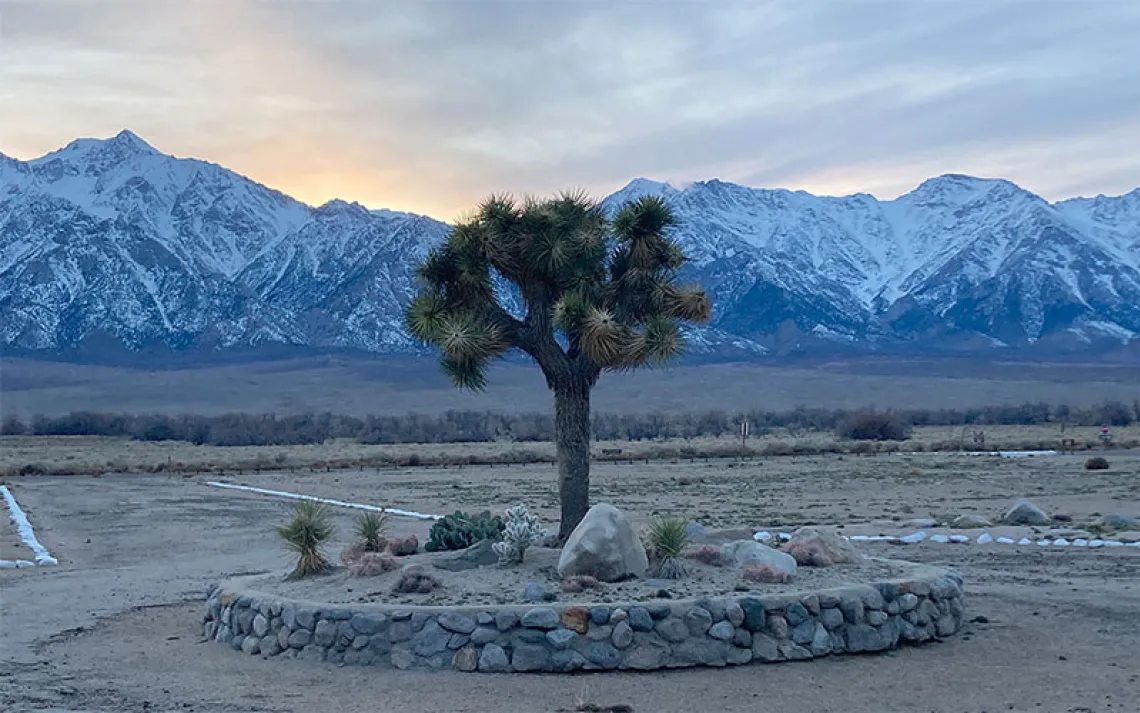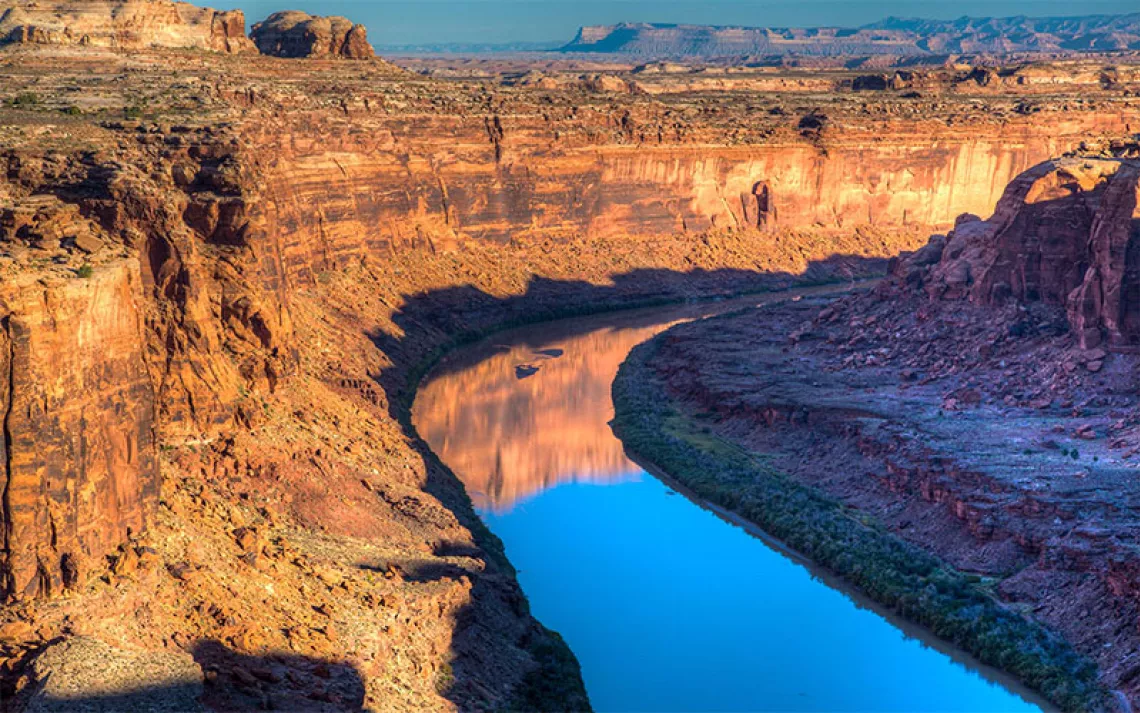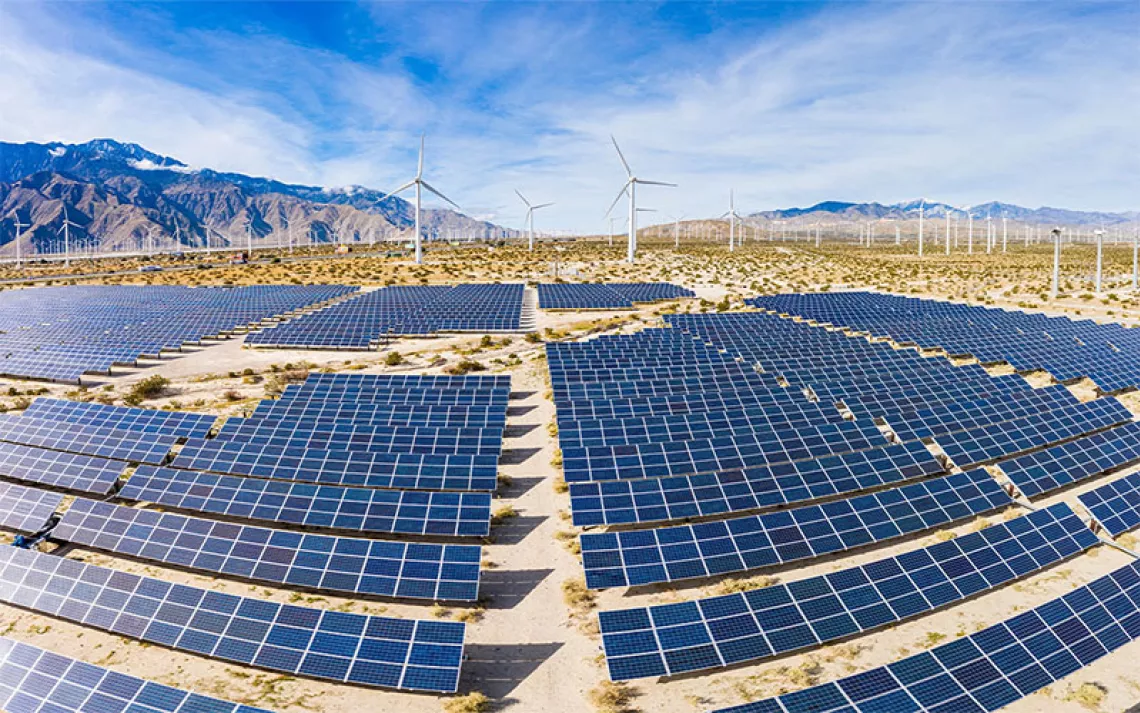Oil and Gas Drilling Threaten Indigenous Cultural Sites
Trump's "energy dominance" agenda puts Utah antiquities at risk

A 15-foot-long petroglyph panel near Bluff is one of the many cultural treasures in southeast Utah. | Photo by Katherine Frey/Washington Post/Getty Images
Today, few people inhabit southeast Utah, a high-desert landscape where a maze of sandstone canyons drain toward the San Juan River. But 1,000 years ago, the region was home to a booming agrarian society. It is not difficult to find evidence of past cultures⎯cliff dwellings where painted pottery lies strewn among crumbling walls, ethereal faces that were etched onto boulders before the birth of Julius Caesar, and 150-year-old Ute petroglyphs depicting figures in feathered headdresses. Near some ancient pueblos, historic cowboy signatures mark the walls, rounding out a millennia-long story of human habitation.
Across the Four Corners region, thousands of such archaeological gems are located above another kind of treasure: vast oil and gas deposits. For many years, federal officials sought to protect cultural sites from industrial development. Even as the Obama administration was overseeing a surge of drilling on public lands nationwide, it deferred oil and gas leases on thousands of acres of Bureau of Land Management land in southeast Utah, citing the area's rich cultural resources. Just before leaving office, President Obama, at the urging of five Native American nations, designated the 1.35-million-acre Bears Ears National Monument and in the process protected more than 100,000 archaeological sites from drilling.
Now, however, the Indigenous antiquities of southeast Utah are in jeopardy of becoming victims of the Trump administration's "energy dominance" agenda. In late 2017, President Trump reduced Bears Ears National Monument by 85 percent (though Native American nations and conservation groups are fighting the effort in court). A few months after the president's attack on Bears Ears, Trump's BLM leased 51,000 acres just east of the original monument to oil and gas companies. And last December, another 250,000 acres of BLM land across the West were auctioned for oil and gas extraction. In southeast Utah, all but one parcel sold.
The Pueblo of Acoma, a tribe in New Mexico, argued in a formal protest letter to the BLM that the lease sales were taking place within their ancestral homeland, a cultural landscape "that extends far beyond any monument boundary." The tribe says it conducted a tour of areas slated for oil and gas extraction and discovered the presence of kivas, rock art, medicinal plants, and "extensive artifact scatters." Todd Scissons, Acoma's tribal historic preservation officer, said that visiting places described in his nation's oral history is a powerful experience. "It takes us back in time to think about our ancestors and how they lived in these areas, how their daily lives were," he said. If cultural sites in southeast Utah are altered by drilling, "it will destroy a piece of who we are."
Despite the density of archaeological sites in the area, there is "gross ignorance" about the locations being leased, according to Kevin Jones, Utah's state archaeologist from 1994 to 2011. The BLM wrote in a 2017 environmental assessment that archaeologists have surveyed between 2 and 55 percent of the ground in recently leased parcels. Only after the leases have been purchased and a permit to drill has been issued will on-the-ground cultural surveys begin⎯and even then, there are few avenues for public oversight.
Jones called the process backward. "The lease guarantees that the leaseholder will be able to drill there," he said. "They're supposed to mitigate that effect, but they're allowed to drill even if it will destroy something very important."
The Obama administration sought to address some concerns about oil and gas drilling's impact on cultural sites. It encouraged BLM offices to engage in landscape-level planning before issuing leases, and under Obama the BLM allowed two 30-day periods⎯one for public comment, one for official protests⎯before it announced a final list of parcels to be auctioned.
The Trump administration has erased such safeguards. It eliminated the public comment requirement and shortened the official protest period to 10 days. At the same time, the administration has moved the bidding process from in-person auctions to an online system in which hundreds of thousands of acres across a state can be auctioned in a single day, and sales can occur just months apart.
"BLM used to be able to take essentially as much time as it needed to complete an environmental review or cultural resources consultation," said Sarah Stellberg, an attorney with Advocates for the West. This new directive requires the agency to complete that process in six months, which, according to Stellberg, "means they're having to cut corners and reduce opportunities for meaningful public consultation."
Environmentalists have joined Native Americans in opposing the Trump administration's oil and gas land rush. The day before the December 2018 lease sale, activists with the youth climate action group Wasatch Rising Tide occupied a BLM office in Salt Lake City to protest Trump's policies. Four activists were arrested, including Brooke Larsen, one of the protest's organizers. Under the new BLM directive, she said, "you're supposed to make technical comments on specific parcels, not protest the whole process itself. That makes it very hard to comment in regards to climate change."
According to Jones, increased drilling in southeast Utah could destroy valuable information about how past societies responded to climatic changes. "Archaeologists want to study not only the big places the Mesa Verdes, the Hovenweeps," he said. "We want to study places where regular people were living and see the effects of the climate change that was occurring at the time. Those research goals can help us understand not only what was happening hundreds of years ago, but also what could be happening to us today and into the future."
This article appeared in the March/April 2019 edition with the headline "Looting in Plain Sight."
 The Magazine of The Sierra Club
The Magazine of The Sierra Club



